Thermal System for Battery Cooling for Bus
完璧な温度制御ソリューションについては、今すぐお問い合わせください。
Thermal system for battery cooling for bus overview
As the power source of electric vehicles, power batteries are a key part of improving vehicle performance and reducing costs. Its temperature characteristics directly affect the performance, life and durability of electric vehicles. Currently, the most widely used batteries include lead-acid batteries, nickel-metal hydride batteries and lithium batteries. Lithium-ion batteries are currently the preferred power battery for electric vehicles due to their large specific energy, long cycle life, low self-discharge rate, wide allowable operating temperature range, and good low-temperature effect.
The requirements for thermal management of lithium-ion battery packs are to reasonably design the battery pack structure based on the heating mechanism of lithium-ion batteries, select appropriate thermal management methods, and rationally design thermal management strategies to ensure that each single cell in the battery pack operates within a reasonable temperature range. At the same time, try to maintain temperature uniformity among each battery and battery module in the bag.
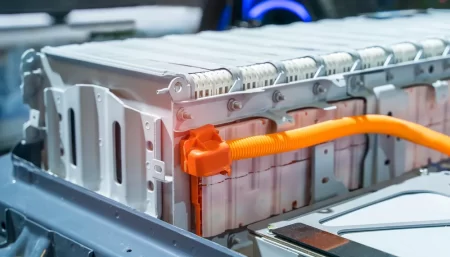
Functions and target settings of thermal system for battery cooling for bus
The thermal system for battery cooling for bus has the following five main functions:
Accurate measurement and monitoring of battery temperature
Effective heat dissipation when the battery pack temperature is too high
Rapid heating under low temperature conditions enables the battery pack to operate normally
Effective ventilation when harmful gases are generated
Ensure uniform distribution of battery pack temperature field
Thermal management goals
Thermal management objectives ensure the realization of design indicators for safe and stable operation of electric vehicles. It is a programmatic document for the design of thermal management systems and serves as a guide.
The setting of thermal management goals includes not only the special technical indicators of the thermal management system itself, but also comprehensive considerations of other aspects of the vehicle design (such as coordination with other component systems, system operation convenience, safety, cost control, etc.). Management system requirements.
The setting of thermal management goals needs to consider the following aspects:
Ensure that the battery pack is within the safe operating temperature range under different operating conditions
Reliability requirements (collision, external fire, water wading, extreme high and low temperatures, etc.)
Battery pack overall temperature uniformity index
Usage performance requirements (such as fast charging performance of the battery pack under high charging power, long battery life in high and low temperature environments)
Response time indicator of temperature control (rapid cooling or rapid heating)
Energy efficiency indicators of thermal management systems (fluid cooling loop flow and pressure drop parameters)
Intelligent control requirements
System cost considerations (economics)
Maintenance convenience
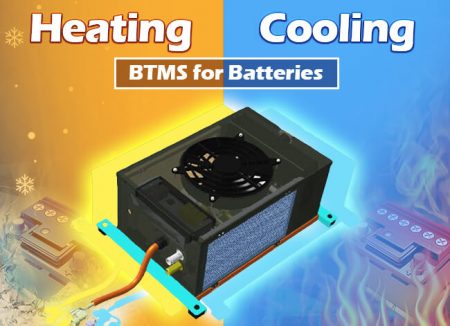
Cooling system
The temperature environment in which the battery works must meet specific requirements. For example, the general ambient temperature of lithium iron phosphate batteries is -20°C to 60°C. The battery will continuously generate heat during the charging and discharging process. If this heat is not dissipated in time, the internal temperature of the battery can easily overheat or even cause thermal runaway. Therefore, a cooling system for the battery pack is essential.
According to the different cooling media, the cooling system can be divided into air cooling (air cooling), liquid air cooling and phase change liquid cooling. The heat dissipation capabilities of these three cooling methods are gradually enhanced, and the complexity of the cooling system is also gradually increased. At present, the cost of phase change cooling is relatively high. Currently, air cooling and liquid cooling are often used in engineering technology.
(1) Air cooling mode
The main purpose is to force cold air to flow through the battery surface for heat exchange and cooling. This solution is greatly affected by the external environment, especially in hot weather, and cold air needs to be introduced from the passenger compartment. The density of the gas is very small and the volume heat capacity is small. A large flow rate is required to achieve efficient heat exchange, and the overall heat exchange efficiency is relatively low. In addition, because the inlet air temperature is difficult to control, the battery temperature is also difficult to control. The advantages of this cooling method are that the system cost is very low and the technology is relatively mature. It is still used in some hybrid models that use less battery modules.
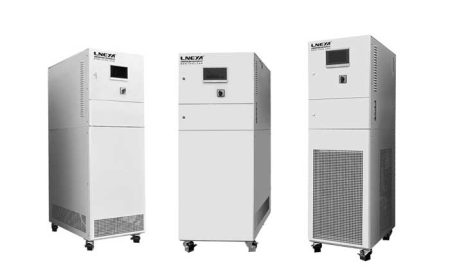
(2) Liquid cooling mode
The refrigerant (liquid cooling medium) can be pure water, 50% ethylene glycol aqueous solution, pure ethylene glycol, air conditioning refrigerant working fluid, etc. Generally, a heat exchanger is added to couple with the refrigeration cycle to remove the heat from the battery through the refrigerant.
The entire system mainly includes: pump, heat exchanger, battery cooling plate, PTC heater, and expansion tank. When the battery needs to be cooled, the battery exchanges heat with the coolant through the heat sink. The heated coolant is sent into the heat exchanger by the electronic water pump. The refrigerant is passed into one side of the heat exchanger and the coolant is passed into the other side. The two fully exchange heat in the heat exchanger, the heat is taken away by the refrigerant, and the cold water flows out of the heat exchanger and into the battery, forming a cycle. When the battery needs to be heated, close the refrigeration circuit and turn on the PTC heater. The coolant is heated and sent into the battery to heat the battery through the heat sink. The temperature of the cooling heat can be controlled by controlling the on and off of the refrigeration circuit and the PTC heating power, thereby controlling the internal temperature of the battery. This solution system is more complex and the cost is higher.
(3) Air-cooling/water-cooling hybrid cooling system
There are two key components in the air-cooling/water-cooling hybrid cooling system: one is a water-cooled battery cooler, and the other is an air-cooled battery radiator. The air-cooled/water-cooled hybrid cooling system has the advantages of compact system, good performance, and economical and energy-saving in low-temperature environments. However, this system is complex, costly, complex to control, and requires high reliability.
Cooling systems can also be divided into active cooling and passive cooling based on the source of energy supply. Usually the passive cooling system directly discharges the hot air inside the battery from the car body, while the active cooling system usually has an internal circulation system and actively adjusts according to the temperature of the battery system to achieve the best thermal control effect. Passive cooling has the advantages of simple structure, few parts, and low cost, and is widely used in battery cooling system design.
Eメール info@lneya.com WeChat ID: +8615251628237 WhatsApp: +86 17851209193

ヒート/クール温度・流量制御システム
(カスタムデザイン)
車両品質テスト用温度シミュレーション:バッテリー寿命テスト、燃料噴射装置/モーターテストベンチ、エアバッグテスト、コンポーネントテストベンチなど。
| 温度範囲 | -25°C ~ +100°C | -40°C ~ +100°C | 0°C ~ +100°C | -40°C ~ +135°C | |||||
| 冷却能力 | 2.8~38kW | 1.2〜60kW | 1.8〜60kW | 4〜60kW | |||||
| 注: -150℃の~ +350℃からの温度較差および冷却容量はカスタマイズすることができる | |||||||||
温度/圧力/流量を個別に制御可能
1&2: 2つのグループ制御のための1つの機械
| 温度範囲 | -40 ~ +100℃ 1&2 | 0 ~ +100℃ 1&2 | |||||||
| 冷却能力 | 1.8kW*2〜60kW*2 | 1.8kW*2〜60kW*2 | |||||||
| 注: -150℃の~ +350℃からの温度較差および冷却容量はカスタマイズすることができる | |||||||||
温度は一定、圧力・流量は個別に制御可能
1&3: 3つのグループコントロールのための1つの機械
1&6:1台で6グループをコントロール
| 温度範囲 | -40 ~ +100℃ 1&2 | -40 ~ +100℃ 1&3 | -40 ~ +100℃ 1&6 | -20 ~ +100℃ 1&6 | 0 ~ +100℃ 1&2 | 0 ~ +100℃ 1&3 | 0 ~ +100℃ 1&6 | ||
| 冷却能力 | 2.5〜60kW | 4〜60kW | 10 ~ 60kW | 10 ~ 60kW | 7~60kW | 11~60kW | 18 ~ 60kW | ||
| 注: -150℃の~ +350℃からの温度較差および冷却容量はカスタマイズすることができる | |||||||||
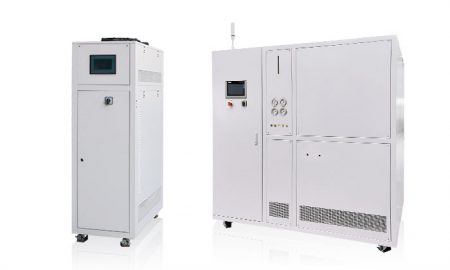
オイルチラー
(カスタムデザイン)
車両品質テスト用温度シミュレーション:バッテリー寿命テスト、燃料噴射装置/モーターテストベンチ、エアバッグテスト、コンポーネントテストベンチなど。
| 温度範囲 | 0℃ ~ +160℃ | +5℃ ~ +135℃ | |||||||
| 冷却能力 | 11~60kW | 15~38kW | |||||||
| 注: -150℃の~ +350℃からの温度較差および冷却容量はカスタマイズすることができる | |||||||||
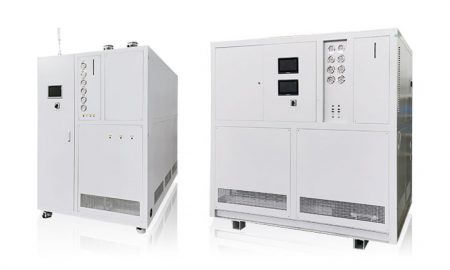
電子ポンプ用冷暖房システム
(カスタムデザイン)
| 温度範囲 | -40°C ~ +135°C | ||||||||
| 冷却能力 | 60kWまで | ||||||||
| 注: -150℃の~ +350℃からの温度較差および冷却容量はカスタマイズすることができる | |||||||||

高温・低温バッテリー試験室
(カスタムデザイン)
| 温度範囲 | -40℃ ~ +100℃ | -40℃ ~ +100℃ | |||||||
| 冷却能力 | 1.8 ~ 7.5kW | 4~15kW | |||||||
| 注: -150℃の~ +350℃からの温度較差および冷却容量はカスタマイズすることができる | |||||||||

自動車用直接冷却または加熱システム
(カスタムデザイン)
| 種類 | 直接冷却 | ダイレクト・クーリング&ヒーティング | |||||||
| 冷却能力 | 5~10kW | 5~10kW | |||||||
| 注: -150℃の~ +350℃からの温度較差および冷却容量はカスタマイズすることができる | |||||||||
 LNEYA
LNEYA
 简体中文
简体中文


















































































